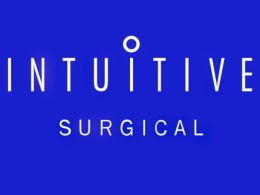by Kristina Hooper, Invesco Canada
Market Weekly Compass: Our base case scenario for the rest of 2021 anticipates that economies will likely accelerate as they re-open, but expects any accompanying rise in inflation to be temporary.
In just over a year, the world has gone through incredible change – thrown into a pandemic and plunged into a global recession. Since the start of the pandemic, we have sought to make sense of this “black swan” scenario, sharing our insights and outlook with our clients.
We last put out an outlook at the end of last year, sharing our expectations for 2021. In that outlook, our base case anticipated an effective vaccine rollout that improved confidence and lowered infection rates, with the U.S. experiencing a strong economic re-opening in the second quarter, followed by the eurozone. We favoured risk assets and preferred cyclicals over defensives in this environment. We have largely seen that expectation come to fruition.
Now as we look to the back half of 2021, we at Invesco again brought together some of our most experienced investment professionals and thought leaders to provide a mid-year update to our outlook. To continue to address the breadth of possibilities that may lie ahead in the environment, we are providing a base case scenario, which we believe is highly probable, and two other possible scenarios that explore two different tail risks.
Our base case: A strong economic re-acceleration with temporary inflation
Our base case anticipates that economies will likely accelerate as they re-open, but expects any accompanying rise in inflation to be temporary. In our opinion, the United States has had a very effective vaccine rollout and is likely to take the lead in the global economic recovery as growth in China moderates. The UK and eurozone are likely to follow the U.S. recovery, with some emerging markets countries generally lagging behind because of the obstacles they face vaccinating their respective populations, which is likely to result in episodic resurgences of COVID-19. As economies re-open and spending increases, inflation should rise significantly, especially in the U.S. as the U.S. Federal Reserve (Fed) expects, but we anticipate it will moderate to a rate faster than pre-crisis trends but not sufficient to induce aggressive action from central banks. Over the longer term, we expect demographics and innovation to place downward pressure on inflation.
In our base case scenario, we expect investors to be rewarded for taking on more risk, and so we favour equities, real estate, and industrial metals. Given our expectation of a strong economic recovery, within equities we favour value over growth, and industrials, materials, and financials over defensives. We also favour smaller-cap stocks in this environment. In fixed income, we expect high yield and investment grade credit to outperform government bonds. In terms of regions, we favour Europe and emerging markets, which we believe should be helped by expectations of improving economic growth as well as a weaker dollar.
Tail risk 1: Pandemic resurgence
Our first tail risk scenario contemplates a resurgence of the pandemic as a result of the spread of more powerful virus mutations against which existing vaccines are substantially less effective. In our view, this would have a negative impact on economic growth globally, but we believe the impact would not be nearly as dramatic as the initial wave of COVID-19 because economies have learned to adapt to lockdowns and have developed other tools to control the spread of the pandemic. Emerging markets economies would likely be hit hardest due to relatively limited health care infrastructure as well as lower vaccination levels.
In such a lower-growth environment we would favour gold, sovereign debt, investment grade credit and cash. Within equities, we would favour defensive sectors with stable cash flows and wider margins. Conversely, cyclical sectors should underperform as the recent value rotation comes to a halt, with financials hit by a flattening of the yield curve.
Tail risk 2: High inflation
Our second tail risk scenario describes a strong economic re-acceleration accompanied by a rise in inflation that is more persistent. In this scenario, we believe rapid growth would come with a quickening pace of inflation. Markets would anticipate higher inflation and Fed tightening, causing the yield curve to steepen on the back of rising inflation expectations but no Fed rate hikes in sight over our scenario period, which is one year.
In this scenario we would favour commodities, equities, real estate, and inflation-protected bonds. Within equities, we would expect to find increased dispersion in sector performance, exacerbated by differences in interest rate sensitivity, with financials likely benefitting from a steeper yield curve. Long-duration sectors such as consumer staples, health care and technology should underperform, while sectors with real asset characteristics such as industrials, materials and energy should outperform. In fixed income, we would look for risky credit, except for EM debt, to outperform government bonds.
Looking ahead
Given the unique nature of this economic crisis, many factors will dictate the path of the economic recovery in the second half of 2021 and beyond. We will be closely following vaccination levels and COVID-19 infection rates along with fiscal policy, monetary policy, and economic conditions as we progress through the back half of 2021.
Read our full Mid-Year Investment Outlook.
This post was first published at the official blog of Invesco Canada.















